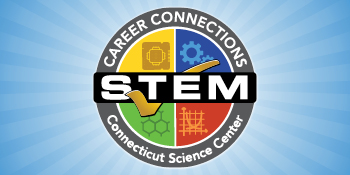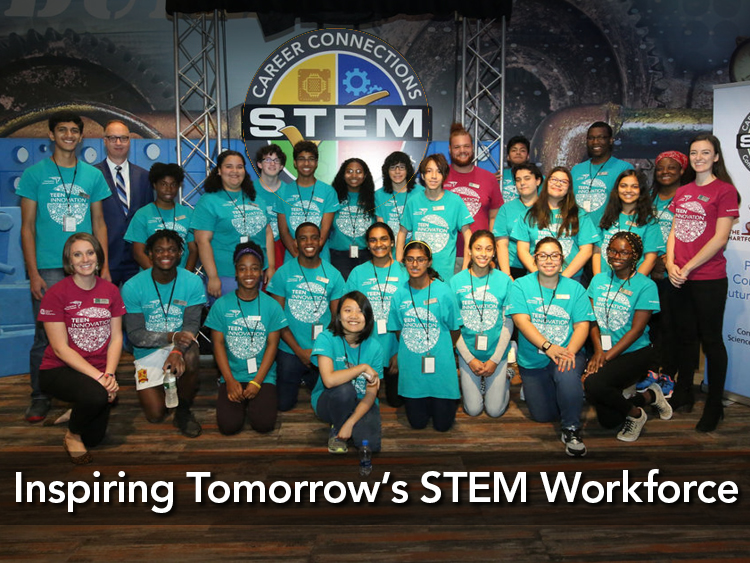Motion is a fundamental property of the universe. When an object is in motion, we say it is dynamic, and when it is still, we call it static. How do we distinguish the two? What does motion do, and how does it happen? In what ways do STEM professionals harness the power of motion through their work?
While every shape imaginable has a length, width, and height, let us focus on length, which engineers and physicists use to define something called the relative position. For our purposes, we will measure in feet. Imagine you are at one end of a soccer field, and you kick the ball to your friend at the other end. You would measure the total length the ball travels as the distance between you and your friend, but there are even smaller lengths within this length. The number of feet corresponding to the ball being 1/2 or 3/4 of the way to your friend is the relative position, which can help us define motion and stillness.
 When thinking about motion, we must consider time. If something is static, it does not change position as time passes. Conversely, this must mean that dynamic objects change position with the flow of time. For example, picture a flowing river that represents the passage of time. If we anchor a boat to the river floor, the boat is static because it does not change position, but the river still flows past. If we pull up the anchor, the boat flows with the river of time, meaning it is in motion. To illustrate this further, remember that we measure a car’s speed in miles per hour, where miles are the change in position, and hours are a change in time.
When thinking about motion, we must consider time. If something is static, it does not change position as time passes. Conversely, this must mean that dynamic objects change position with the flow of time. For example, picture a flowing river that represents the passage of time. If we anchor a boat to the river floor, the boat is static because it does not change position, but the river still flows past. If we pull up the anchor, the boat flows with the river of time, meaning it is in motion. To illustrate this further, remember that we measure a car’s speed in miles per hour, where miles are the change in position, and hours are a change in time.
Next, let us shift our thinking even more by considering velocity, an object’s speed in a given direction, and acceleration, the change in velocity over time. Let us go back to our boat analogy. Visualize the boat floating down the river at 17 knots or around 20 miles per hour. If the boat continues at the same pace, it does not change velocity, and therefore there is no acceleration. However, if the boat speeds up, velocity increases over time and causes acceleration. Acceleration helps objects start moving, and our friend Isaac Newton tells us that movement happens due to an applied force, like a boat’s engine, or a paddle.
 What can we do with this knowledge? Motion is involved with manufacturing everything around you–cars, airplanes, boats, submarines, and even your chair. We can also use these rules to describe the moon’s movement and predict the sun’s location. The possibilities are endless. Humans use motion, speed, velocity, and acceleration, both in their everyday actions but even more so for sports and other high-impact activities. Meet Dr. Kirsten Tulchin-Francis, a biomedical engineer who designs prosthetic equipment for children. She is working to create a more efficient knee brace to withstand the strenuous movements through which children put their bodies, and she needs to consider motion in almost every step of developing the knee brace. As an engineer, she needs to ensure the knee brace allows movement in some directions while inhibiting others. Therefore, along with understanding muscles, bones, and joints, she also needs to have a firm grasp of the laws of motion. Next time you see a boat float, a car drive, or a person turn a doorknob, think about how motion makes it possible!
What can we do with this knowledge? Motion is involved with manufacturing everything around you–cars, airplanes, boats, submarines, and even your chair. We can also use these rules to describe the moon’s movement and predict the sun’s location. The possibilities are endless. Humans use motion, speed, velocity, and acceleration, both in their everyday actions but even more so for sports and other high-impact activities. Meet Dr. Kirsten Tulchin-Francis, a biomedical engineer who designs prosthetic equipment for children. She is working to create a more efficient knee brace to withstand the strenuous movements through which children put their bodies, and she needs to consider motion in almost every step of developing the knee brace. As an engineer, she needs to ensure the knee brace allows movement in some directions while inhibiting others. Therefore, along with understanding muscles, bones, and joints, she also needs to have a firm grasp of the laws of motion. Next time you see a boat float, a car drive, or a person turn a doorknob, think about how motion makes it possible!
STEM Career Connections at the Connecticut Science Center is presented by The Hartford and Cognizant U.S. Foundation with founding support from the Mandell- Braunstein Family.
Look out for upcoming STEM Career Showcases and virtual events where you can engage with real professionals to learn more about your future in STEM careers.

Nathan Green is a summer intern for the Programs Team at the Connecticut Science Center. He is currently studying Biomedical Engineering at the University of Hartford. He one day hopes to contribute to NASA’s mission to colonize Mars with the help of biotechnology or to advance research in tissue engineering. Prior to joining the Science Center, Nathan worked in childcare.


